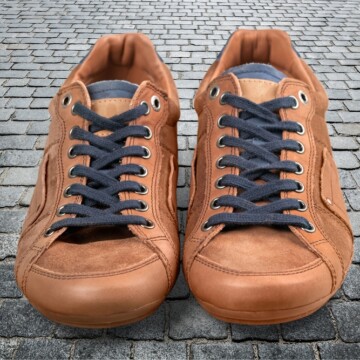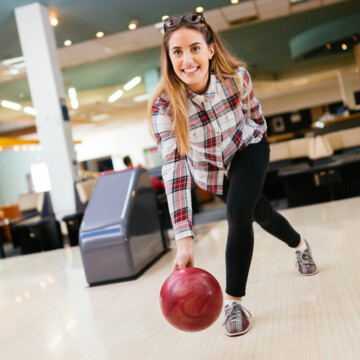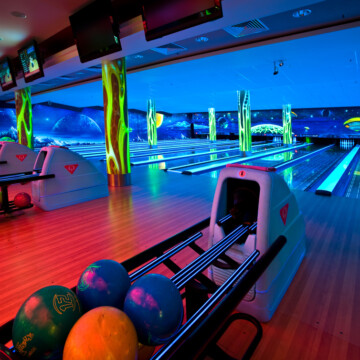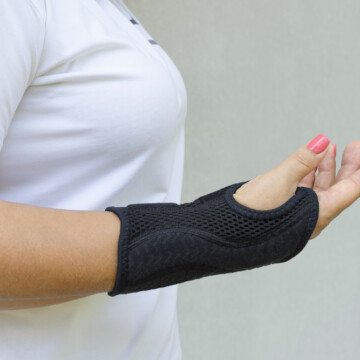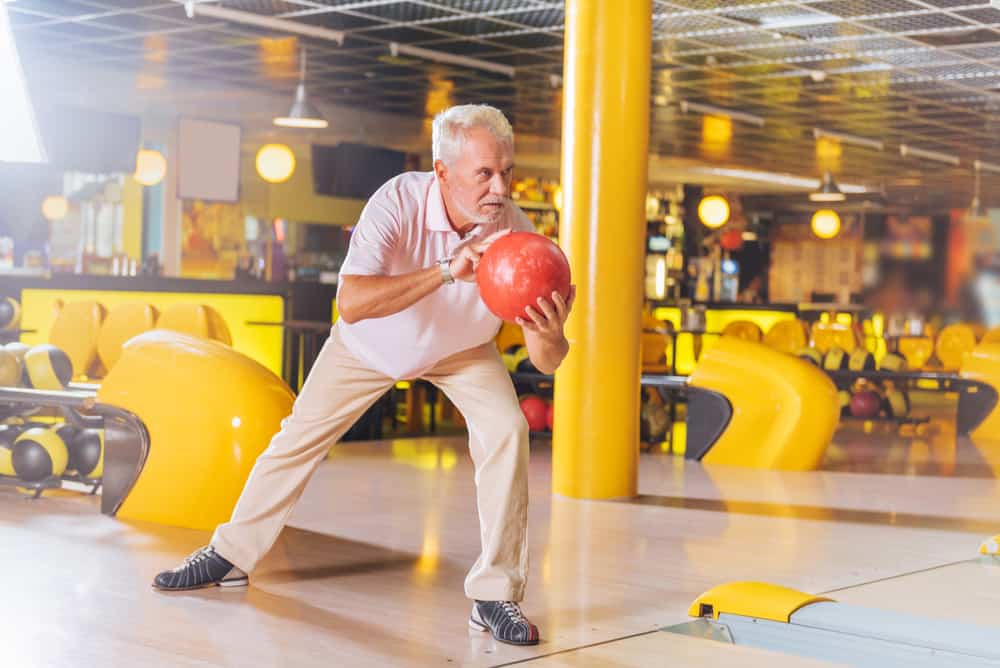
Bowling is an ancient sport that has been loved by many throughout the years.
Known as one of America’s greatest past times, the sport has integrated itself so deeply into American culture that it is incredibly rare to find someone who has not tried the sport at least once in their life.
The sport is known to be incredibly versatile as well, with bowlers of all ages and abilities able to play with relative ease (including seniors).
Many individuals who try bowling go on to play the sport as they get older, often joining leagues and sharpening their skills throughout the years.
Unfortunately, as practice and skill increase so does the strain that can be placed on our bodies. Like any sport, bowling is a game that requires physical exertion in order for a bowler to perform. So let's discuss the best knee brace for bowling and knee pain.
The stance of the bowler, the approach of the lane, the release of the ball, all of these require the bowler’s body to shift and move, increasing pressure on certain body parts as the bowler goes through the motions.
One of these key troublesome areas that bowlers have to be extra careful of as they play their game is the knee. When you play the game of bowling, a lot of pressure and strain is placed on your knee through all stages of your game.
Your knee is there to bend, support and balance as you shift through your stance. It is there to move your body forward as you glide into your approach, twisting and turning as you shift your body into the required form.
It is also there to brace you as you release your ball and help you keep your balance as you bend into your final form upon the ball’s release. Through it all your knee is there, supporting you under enormous strain and pressure.
As time goes on and as you bowl more and more eventually you may notice that your knee begins to protest the treatment it has been constantly put under.
The strain has become too much for your poor joint and your knee begins to vocalize its displeasure through dull throbs and sharp pains before, during or after use. Eventually, the pain could begin to affect your bowling and your everyday activities and you begin to grow worried.
You love bowling and you would hate to give it up! Thankfully there are steps out there that you can take to keep your knee in top condition and prevent injury in the first place.
There are also steps you can take to keep bowling should outside factors, such as arthritis or surgery, affect your knee’s ability to perform.
Contents
Why Does My Knee Hurt After Bowling?
As we mentioned before, when you bowl your knee is put under pressure and strain as you move through the motions of bowling. Our body is allowed to bend in certain areas due to ligaments, muscles, tendons, and bone that connect together to form a joint, our knee is one of these places.
Naturally, our joints have a lot of passive stability, but as pressure and strain are constantly put on them over time eventually injuries such as strains, pulled muscles and tears can occur. The knee is no exception.
When we bowl we are constantly using our knees, in fact during our approach and throw the knee receives the most pressure on our body.
If you take a second to think about it, we essentially use our knees as a balancing point as we shift and throw a heavy weight using only one side of our body, that requires a lot of strength and balance on our knees.
If you are not using the proper form for bowling that can make your knees hurt even more after each game. Proper stance and form are key in keeping your body safe and healthy!
Key Takeaways
- Bowling, a beloved sport, demands physical exertion that significantly strains the knees, necessitating preventive measures to avoid injury.
- Proper form, stretching before and after playing, and strengthening exercises like squats can greatly reduce knee strain and prevent injuries.
- Using specialized bowling shoes helps minimize knee pressure by allowing a smooth glide during the ball's release, protecting the joint.
- Knee braces, particularly those offering full support and adjustability, such as the Ultra Sports Gear brace and EXOUS knee brace, are recommended to stabilize the knee and lessen pain.
- For knee pain relief, follow the RICE method: Rest, Ice, Compress, and Elevate. Consult a physician if the pain persists or before resuming bowling post-surgery or with arthritis.
What Are Some Ways to Prevent Knee Injury?
Stretching
Just like with any sport stretching your muscles before and after exercise is key in preventing injury to your muscles and joints.
By warming up your body and cooling it down you help it prepare for the pressure, strain and lactic acid build up that comes with physical exertion. Squats, lunges, and toe stretches are great ways to help get your legs warmed up and stretched out.
Arm circles, Hand to shoulder then elbow pull stretches and extending your arm against a wall to stretch are great ways to help your arms and shoulders get loosened up as well.
Strengthen Muscles
Another step you can take to protect your knees (and body) is to strengthen the muscles used in bowling outside of the game. Squats are a great tool to strengthen your quadriceps and as those muscles strengthen eventually your knees will become stronger as well.
To execute a proper squat you need to start by standing with your feet shoulder length apart.
After that, you will lower your body to the ground at a moderate pace (if you imagine sucking in your belly till it meets your spine you can sneak an ab workout in as well!) until you have lowered your body into a position that looks like you are sitting in a chair.
You will hold this position for five seconds before returning to the upright position at the same controlled pace. Repeat the process at least ten times before moving on with the rest of your day.
Three sessions of ten squats a day is a good place to begin but make sure to listen to your body and modify as needed.
Proper Form
We can not stress enough how important the proper stance in bowling is. Even with the proper form strain and pressure will be put on your knees but bad form will make the strain (and pain) so much worse!
Talk to your teammates, the bowling alley workers or other league teams and get tips on proper stance if needed. Your style of bowling is completely unique to you but they can help by watching and giving pointers on ways you can adjust your form if it is needed.
(Note: Bending your knees slightly when bowling helps reduce the pressure on them!)
Proper Shoes
Just like with proper form the proper shoes are incredibly important in protecting your body in bowling, especially your knees.
Bowling shoes are actually specifically designed to take strain and pressure off our knee joints, protecting them by helping balance and creating a slide effect on the release of the ball.
This slide that accompanies bowling shoes is actually done to make sure we are not putting all of our weight on our knees as we release the ball, instead, we gently glide a bit over the floor as we release, taking off strain as we somewhat follow the ball through its release.
Without bowling shoes, you would simply come to an abrupt stop before hurling a heavyweight down a sixty-foot lane and your knees would take the brunt of it!
Braces/Supports
Perhaps one of the best ways you can protect your knees from injury or help stop existing pain is the use of a knee support.
There are many options of braces and supports out there specifically designed to reduce the strain and pressure placed on our joints during bowling.
By wearing a brace you are helping to support the knee and stabilize it through rigorous use.
This, in turn, helps lessen the strain the knee undergoes and prevents damage done to the joint, resulting in fewer injuries and reducing any flare-ups of pain.
All of the Above
It is important to note that while these preventive measures help there is no 100% guarantee that your knee will not hurt over the course of your bowling career, that is a lot of pressure for a joint!
However, by combining these preventive techniques and using them together you can greatly reduce your risk of injury or help subdue existing pain.
If your pain continues or gets worse after a while, even with the use of these measures, it would probably be a good idea to seek out a medical professional and see if there is an injury that is refusing to heal or some other underlying cause.
You know your body best but it is important to get persistent pains checked out, just to be safe!
| Preventive Measure | Description | Recommended Products |
|---|---|---|
| Stretching | Warming up and cooling down to prepare muscles and joints for exertion. | Personal choice |
| Strengthen Muscles | Enhancing muscle strength around the knees to support and protect the joint. | Our recommended stretches |
| Proper Form | Maintaining proper stance and movement to minimize strain on the knees. | Personal preference |
| Proper Shoes | Using specialized bowling shoes to reduce pressure on knees by enabling a smooth glide. | Our Recommendations |
| Braces/Supports | Wearing knee braces or supports to stabilize and protect the knee during bowling. | Ultra Sports Gear, EXOUS Knee Brace |
| RICE (Rest, Ice, Compress, Elevate) | A method for relieving minor knee pain through rest, icing, compression, and elevation. | Compression Sleeves, Knee Supports |
What Is the Best Knee Brace for Bowling?
While there are quite a bit of products out there specifically designed to help support the knee it seems that the products with the best results have two things in common.
They provide full support, a stabilizing sleeve (so they cover the lower thigh, the knee, and part of the upper shin) and they are adjustable. With that knowledge, we recommend the Ultra Sports Gear brace and EXOUS bowling knee brace (both of these links take you directly to Amazon to see current pricing and read through user reviews) bowling knee braces.
The sleeve acts to support the entire system of ligaments and tendons around the knee joint, keeping them snug and stabilized through use. This is definitely a perk concerning this type of bowling knee brace since others are only centered around the middle part of the knee, they do not work to support the tendons and ligaments that move away from the patella (knee bone).
Half the time the tears and injuries happen in these ligaments so it makes sense to get a brace that protects the whole joint, tendons, ligaments, bone and all!
If you should have knee pain flair ups and swelling can sometimes accompany it. This is where the adjustable feature comes in handy. You want your brace to be snug but the adjustable feature is nice to help the brace fit you.
How Can I Relieve the Pressure in My Knee?
The best way to help relieve pressure build up in your knee is to follow what the doctors call RICE: Rest, Ice, Compress, Elevate.
This works for minor pain flair ups including those brought on by arthritis. If you find yourself having to follow RICE often consult your doctor!
R: Rest
The meaning behind rest is pretty self-explanatory. Give your knee a break!
By resting your knee you give it a chance to heal and fix the underlying problem that is causing the pain. Be careful not to give it too much rest though, you don’t want to weaken it, just give it a break!
I: Ice
Ice your knee regularly to help reduce swelling or inflammation. If you are in pain that means that there is an injury somewhere in your knee, whether it be a tear, strain or pull.
This type of trauma can cause swelling, resulting in the building of pressure. By icing your knee you are able to reduce the swelling and calm the inflamed tissue, resulting in the pressure going down and pain relief.
C: Compress
By gently compressing the affected area, usually through a knee compression sleeve, bandage or wrap, the swelling of a pained knee can be drastically reduced. This helps speed up recovery time and manage the pain better. Make sure this is a gentle pressure though, you don’t want to cut off circulation!
E: Elevate
By elevating, or propping up, your knee above your heart level you reduce the amount of blood flow to the injured knee. This decreases swelling and helps elevate the pressure and pain your knee is feeling.
How Do You Deal with Arthritic Knees When Bowling?
Now say your knee is hurting for a different reason, one not related to an injury but arthritis. So how do you deal with arthritic knees while bowling? Well, there are a few steps you can take to ensure you can play your favorite sport.
Painkillers
Consult your doctor before you begin using painkillers! A lot of bowlers with arthritis will take a couple ibuprofen before bowling to help with inflammation. To much runs the risk of damaging your liver so once again, consult your doctor.
Arthritic Brace/Bowling Brace
For arthritis, many bowlers rave about having a compression knee sleeve brace with two metal supports on each side. The stability and heat generated by the brace helps keep the swelling down.
Change Your Form
A lot of a bowlers revs (revolutions of a ball) are generated through the bending of their knees. This can be hard to do with arthritis in your knees. By changing your form into one of a sliding approach you can ease the strain on your knees without the damaging loss of power.
Cortisone Shot
Talk to your doctor about receiving a cortisone shot to help manage your pain through the season! This shot can help reduce swelling and manage pain in arthritic knees, but once more it is important to talk to your doctor to see if you can benefit from it.
Can You Bowl After Arthroscopic Knee Surgery?
Talk to your doctor, talk to your doctor and once more, talk to your doctor! Your physician should always be consulted before you begin any type of exercise after surgery.
If you had arthroscopic knee surgery there was a reason behind it and you most certainly do not want to do more damage to the area by straining yourself before you are ready!
Your body is unique in its healing capabilities, so it is very important you go your own pace and follow your doctor’s instructions, no matter how long that healing process takes.
Once you are all healed up and you have the green light from your physician, there should be no reason that you wouldn’t be able to bowl.
You may have to build up strength, adjust your stance to put less strain on your knee, or not have the same power as before, but as long as you take it easy and listen to your body you should eventually be able to return to the bowling scene.
My Final Words
To effectively manage and prevent chronic knee pain commonly associated with bowling, it's crucial to adopt measures that offer direct support and protection to the knee joint. Knee compression sleeves, such as the RiptGear Compression Knee Sleeve and the Powerlix Knee Compression Sleeve, are essential for those seeking to alleviate discomfort and enhance stability during play.
For more severe knee injuries or those requiring additional support, hinged knee braces or a neoprene knee brace, like the Shock Doctor Knee Brace, provide a higher level of protection by stabilizing the knee cap and surrounding areas. Utilizing light and breathable fabric, these compression sleeves and knee supports offer both comfort and efficiency, preventing knee pain and allowing bowlers to continue enjoying the game without risking further injury.
Kira Byrd, a Certified Fraud Examiner, holds a B.S. in Accounting from the University of Alabama at Birmingham. With a passion for bowling from her childhood, Kira has poured her expertise and personal experiences into creating and nurturing Bowling For Beginners. Kira's mission is to meet new bowlers where they are and guide them toward consistently achieving higher scores. With a focus on skill development and strategic techniques, she empowers readers to take control of their game and unlock their true potential.
Bowling For Beginners embodies strict editorial integrity, ensuring reliable and unbiased information. Kira's commitment to delivering valuable insights and practical strategies is reflected in every article. Here's an explanation of our editorial policy and how we get money.


